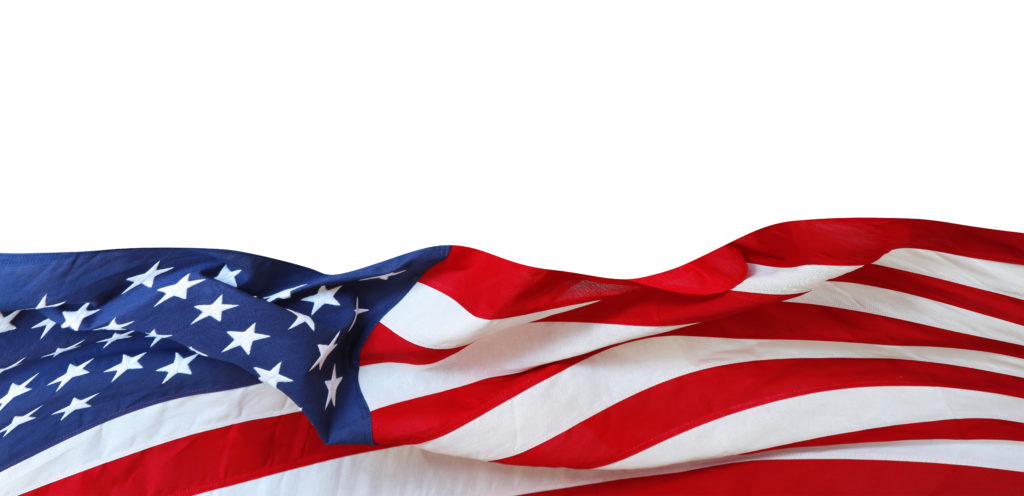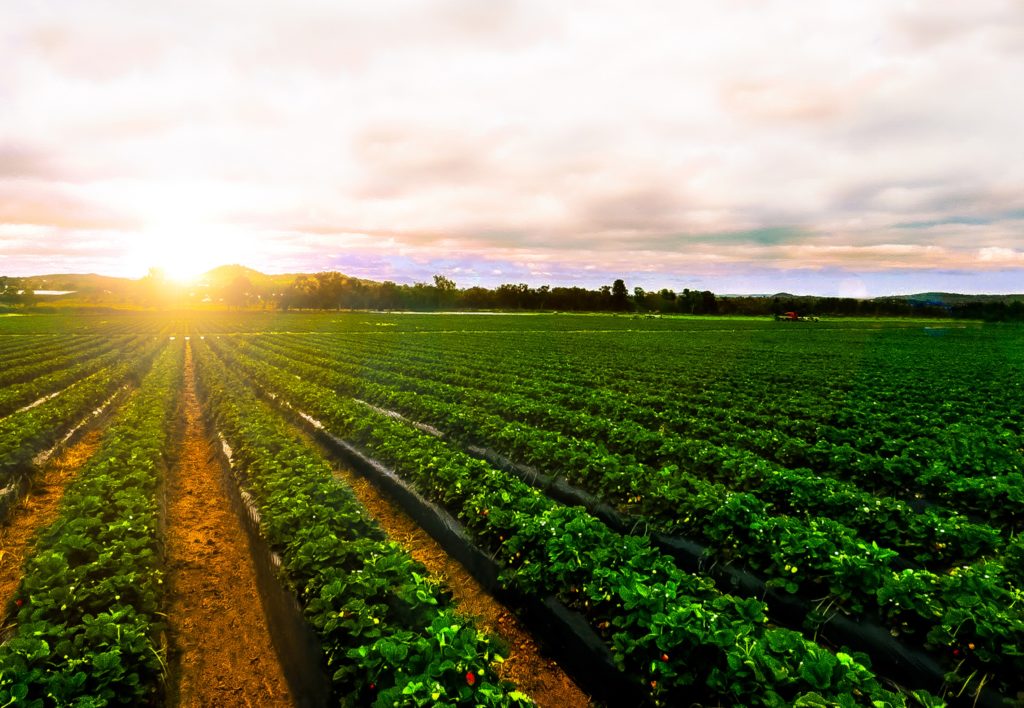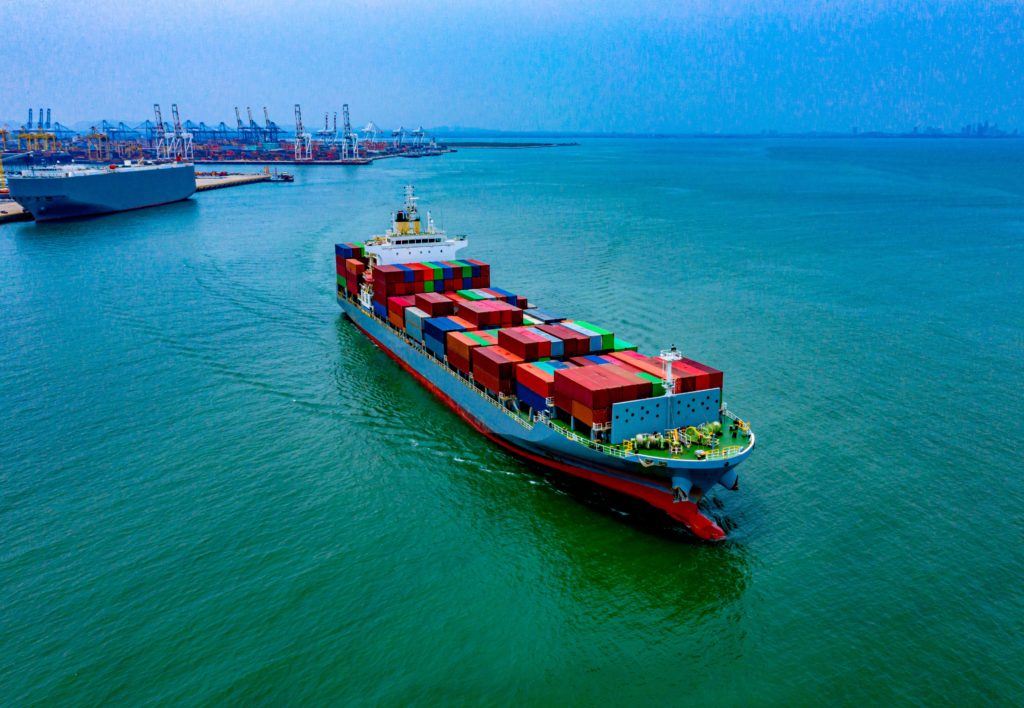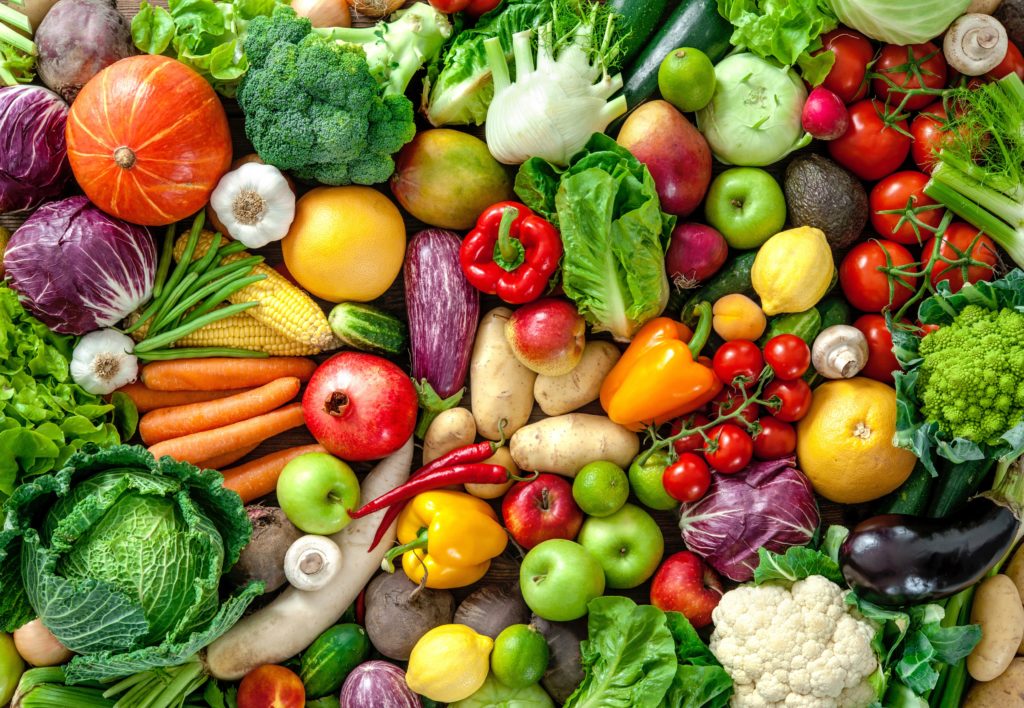USDA National Organic Program
USDA Organic Program
USDA National Organic Program (NOP)
The National Organic Program (NOP) of the United States Department of Agriculture (USDA) is a federal regulatory program that develops and enforces uniform national standards for organically-produced agricultural products sold in the United States. Organic Certification allows a farm or processing facility to sell, label, and represent their products as organic. The organic brand provides consumers with more choices in the marketplace. The USDA protects consumer options by protecting the organic seal.
USDA authorizes organizations around the world to certify farms and businesses to the USDA organic regulations. Organic Accreditation authorizes private, foreign, or state organizations to certify farms or processing facilities. Certifying agents are accredited by the USDA and are responsible for making sure USDA organic products meet all organic standards. USDA and accredited certifiers work together to enforce the standards, ensuring a level playing field for producers and protecting consumer confidence in the integrity of the USDA Organic Seal.
The U.S. has established organic trade arrangements with Canada, the European Union, Japan, the Republic of Korea and Switzerland. These arrangements help food producers located in the U.S. import organic ingredients that are not produced within the U.S. View details in International Trade Partners
Any organic operation violating the USDA organic regulations faces enforcement actions, which can include financial penalties or suspension/revocation of their organic certificate.
In-Depth Coverage: USDA-Regulated Products
- Importing USDA-Regulated Food Products
- Import Regulation by USDA Agricultural Marketing Service (AMS)
- Food Products – FDA or USDA Regulated
- Country of Origin Labeling
- Importing Animals, Animal Products, and Biologics into the US
- Importing Meat, Poultry, and Egg Products into the US
- Labeling and Marking of Imported Meat, Poultry, and Egg Products
- USDA National Organic Program (NOP)
- Agricultural Safeguards and USDA Licensing
In-Depth Coverage: Country of Origin
- Country of Origin of Imported Merchandise
- Customs Ruling: Country of Origin
- Country of Origin: Food Products
- Country of Origin: Chemical and Pharmaceutical Products
- Country of Origin & Country of Manufacture: CBP vs. FDA
- Country of Origin: Substantial Transformation or Country of Assembly Test
- Country of Origin and Free Trade Agreement
- Country of Origin and Section 301
How to Become USDA Certified Organic
Certifiers are responsible for making sure that USDA organic products meet all organic standards. There are five basic steps to organic certification:
1. The farm or business adopts organic practices, selects a USDA-accredited certifying agent, and submits an application and fees to the certifying agent.
2. The certifying agent reviews the application to verify that practices comply with USDA organic regulations.
3. An inspector conducts an on-site inspection of the applicant’s operation.
4. The certifying agent reviews the application and the inspector’s report to determine if the applicant complies with the USDA organic regulations.
5. The certifying agent issues an organic certificate.
To maintain organic certification, your certified organic farm or business will go through an annual review and inspection process.
Four Organic Labeling Categories
The NOP regulations provide four organic labeling categories:
(1) 100% Organic—excluding water and salt, the product must be made of only organically produced ingredients and may use the USDA organic seal;
(2) Organic—excluding water and salt, the product must be comprised of at least 95% organically produced ingredients and may use the USDA organic seal;
(3) Made with Organic Ingredients—excluding water and salt, the product must contain at least 70% organic ingredients and the label may list three of the organic ingredients or food groups, such as herbs, but the product may not use the USDA organic seal; and
(4) specific ingredients may be identified as organic if they are USDA-certified organic, but these products may not use the USDA organic seal or the term “organic.”
In-Depth Coverage: Marketing and Advertising Compliance
- Federal Trade Commission (FTC) Advertising Rules
- Made in USA Standard
- FTC Regulation on Environmental Claims
- Adverting and Marketing on the Internet
- Label Claims for Conventional Foods and Dietary Supplements
- Dietary Supplement Advertising: What is FTC's Truth-in-Advertising Law?
- USDA Country of Origin Labeling (COOL)
- FTC Rules & Regulations on Food Advertisement
Frequently Asked Questions
How Much Does Organic Certification Cost?
Actual certification costs or fees vary widely depending on the certifying agent and the size, type, and complexity of your operation. Certification costs may range from a few hundred to several thousand dollars. Before you apply, ask your certifier for a fee structure and billing cycle. Typically, there is an application fee, annual renewal fee, assessment on annual production or sales, and inspection fees.
Once you are certified, the USDA Organic Certification Cost-Share Programs can reimburse eligible operations up to 75 percent of their certification costs.
Is There a Transition Period?
Yes. Any land used to produce raw organic commodities must not have had prohibited substances applied to it for the past three years. Until the full 36-month transition period is met, you may not:
-
Sell, label, or represent the product as “organic”
-
Use the USDA organic or certifying agent’s seal
USDA provides technical and financial assistance during the transition period through its Environmental Quality Incentives Program (EQIP). Or, access a variety of funding options, conservation programs, and other programs and services for the organic sector on the USDA Organic Portal.
For further information please refer to USDA website: Becoming a Certified Operation
Importing Organic Products into the U.S.
Organic agriculture is a fast-growing sector in U.S. agriculture, creating jobs, economic growth, and entrepreneurial opportunities. The National Organic Program (NOP), part of USDA’s Agricultural Marketing Service (AMS), establishes international organic import and export policies to facilitate trade and expand market opportunities for certified organic farms and businesses around the world.
Imported organic products must be certified to one of the following standards to be sold in the United States:
-
The USDA organic regulations – USDA authorizes organizations around the world to certify farms and businesses to the USDA organic regulations.
-
An authorized international standard – The U.S. has established trade partnerships with the following international countries.
In-Depth Coverage: Importing Food Products
- What is FDA Food Safety Modernization Act (FSMA)?
- Prior Notice of Imported Foods
- FDA Food Facility Registration
- Risk-Based Preventive Controls for Human Food
- Risk-Based Preventive Control for Animal Food
- Protect Food against Intentional Adulteration
- What is Foreign Supplier Verification Program (FSVP)?
- What is FSMA Produce Safety Rule?
USDA-Regulated Products: General Import Requirements
In addition to organic requirements, traded agricultural products must meet all general or commodity-specific import requirements. U.S. importers and customs services can provide detailed guidance.
Labeling
Organic products sold in the U.S. must meet all Federal labeling requirements (general and organic). Labeling Organic Products
Import Codes
For certain organic products, traders must use harmonized tariff schedule codes for tracking purposes. Organic Trade HS Codes
Grading
Imported agricultural commodities must often meet product size, grade, quality, and maturity requirements. USDA Available Services
Health Inspection
Shipments must include permits, sanitary certificates (animal products), and phytosanitary certificates (plant products) to ensure the product is healthy and free from pests requiring quarantine. Import and Export
Meat, Poultry, and Processed Egg Product
The USDA only allows imported meat, poultry, and processed egg products from countries with inspection standards equivalent to U.S. standards. FSIS Importing Products
In-Depth Coverage: USDA-Regulated Products
- Importing USDA-Regulated Food Products
- Import Regulation by USDA Agricultural Marketing Service (AMS)
- Food Products – FDA or USDA Regulated
- Country of Origin Labeling
- Importing Animals, Animal Products, and Biologics into the US
- Importing Meat, Poultry, and Egg Products into the US
- Labeling and Marking of Imported Meat, Poultry, and Egg Products
- USDA National Organic Program (NOP)
- Agricultural Safeguards and USDA Licensing
In-Depth Coverage: Importing Medical Device
In-Depth Coverage: Customs Valuation
In-Depth Coverage: Trade Remedies
Quick Link To U.S. Customs & Import Requirements
FDA-Regulated Products and Import Requirements
- What is Food Safety Modernization Act (FSMA)?
- Prior Notice of Imported Foods
- Food Facility Registration
- Risk-Based Preventive Controls for Human Food
- Risk-Based Preventive Control for Animal Food
- Standards for the Growing, Harvesting, Packing, and Holding of Produce for Human Consumption
- What is Foreign Supplier Verification Program (FSVP)?
- Protect Food against Intentional Adulteration
- FDA Regulated Product in Foreign Trade Zone (FTZ)
- Entry Review Process for FDA Regulated Products
- Country of Origin VS Country of Manufacture
- Foods Regulated by FDA or USDA: What is the Difference?
- Label and Labeling Claims for Conventional Food and Dietary Supplements
- What is USDA Country of Origin Labeling (COOL)?
- Import for Export of FDA Regulated Products
- FDA Regulated Products in Personal Baggage or Sending by Mail or Courier
- International Mail Facility (IMF) and FDA Regulation
- Importing Biological Product Regulated by CBER
- Importing Cosmetics and Voluntary Cosmetic Registration Program (VCRP)
- Importing Drugs into the U.S.
- Importing OTC Drugs into the U.S.
- Importing Veterinary Drugs into the U.S.
- Importing Tobacco Products into the U.S.
- Importing Medical Devices into the U.S
- Importing Food Products into he U.S.
- Importing Radiation-Emitting Products into the U.S.
Customs Clearance and Import Requirements
- Entry of Imported Merchandise
- What is Section 321 Entry?
- What is Automated Commercial Environment (ACE)
- What is an Automated Broker Interface (ABI)?
- Who is Ultimate Consignee?
- What is Non-Resident Importer Program?
- Country of Origin of Imported Merchandise
- What is the Country of Assembly?
- What if the FDA's Country of Manufacture?
- Marking of Country of Origin on U.S. Imports
- What is Customs Bond?
- Reconciliation Prototype and Bond Rider
- Who Needs a Customs Broker?
- What is Customs Ruling Program?
- Classification of Imported Goods
- How is imported merchandise appraised?
- What are Import Quotas?
- What are Trade Remedy Duties?
- Antidumping Duty (AD) and Countervailing Duty (CVD)
- What is Foreign Trade Zone (FTZ)?
- What is Importer Security Filing (ISF)?
- What is Temporary Importation under Bond (TIB)
- What is In-Bond Process?
Guidance on customs & logistics solution for traditional and e-commerce importers and exporters
Importer Security Filing (ISF)
An ISF is required when cargo (ocean only) laden on vessel at a foreign port is destined for shipment to the U.S. Under ISF rule, some importing information and idetails regarding cargo must be transmitted to the CBP at least 24 hours before goods are loaded onto the vessel.
Customs Clearance
All goods imported into the U.S. are required to be declared to CBP. Our customs broker will help you stay in compliance with customs laws and regulations and clear your goods quickly and efficiently with our electronic Automated Commercial Environment (ACE) and Automated Broker Interface (ABI) Single Window System.
Freight Forwarding
Looking for a freight forwarding partner? To move your cargo from its current location through customs to its final destination we will partner with you to find the best way for your business. Whatever your transportation, logistics or customs clearance needs, we will do our best to customize a solution for your needs.
Warehousing & Distribution
Our warehouse facility offers great potential for serving as a regional hub with over 145,000 SF storage capacity close to Los Angeles Airport & Los Angeles/Long Beach Sea port. With our extensive experience in freight services, your import/export cargo will be handled quickly and effectively.
Section 321 Entry
Section 321 entry allows importing free of duty and tax for shipments imported by one person on one day having a fair retail value in the country of shipment not more than $800. We provide our resident and non-resident clients with dedicated ACE eManifest solutions for Section 321 entry of all modes of transportation.
Non-resident Importer Program
If you want to sell your products in U.S. marketplaces, but you are a business owner located outside of the U.S. and do not have an entity or presence in the U.S., you need to be established as a Foreign Importer of Record before your products can be imported into the U.S. We can help you.
E-Commerce
The Internet has made it easy to find and purchase items from almost anywhere in the world. Our e-commerce experts will help you find the right solution for your international transportation, customs clearance, and delivery to your final destination. We also provide value-added repackaging, warehousing and distribution services.
































